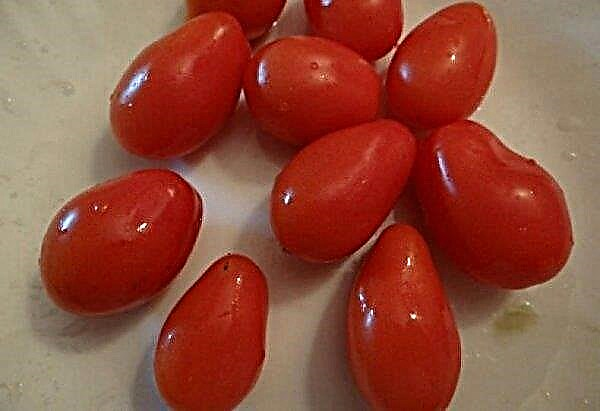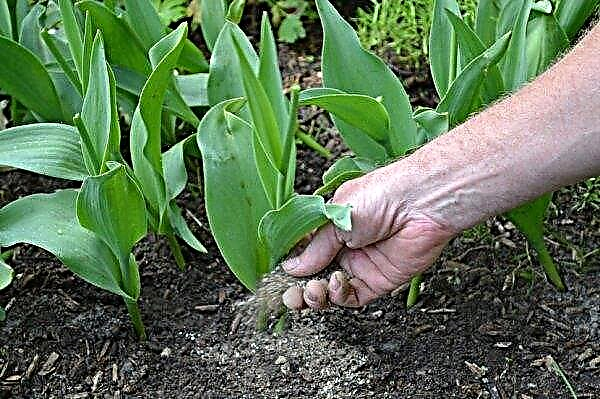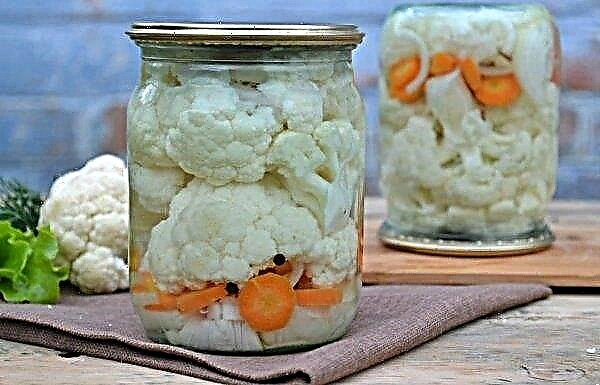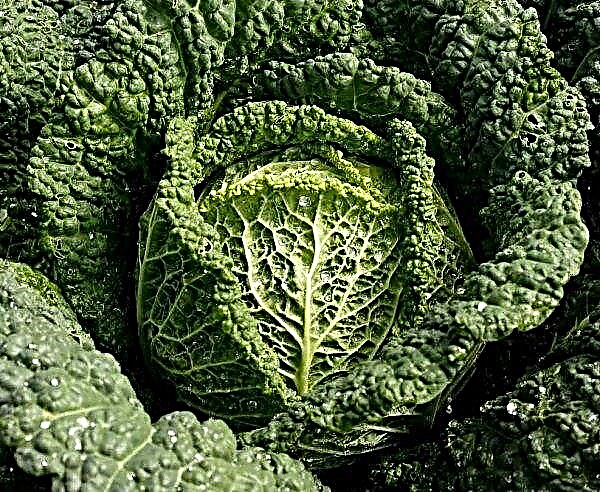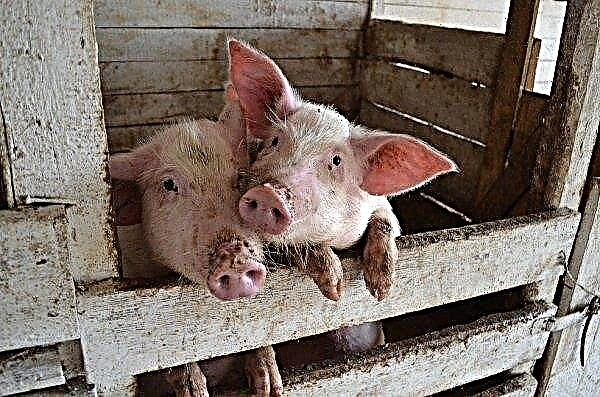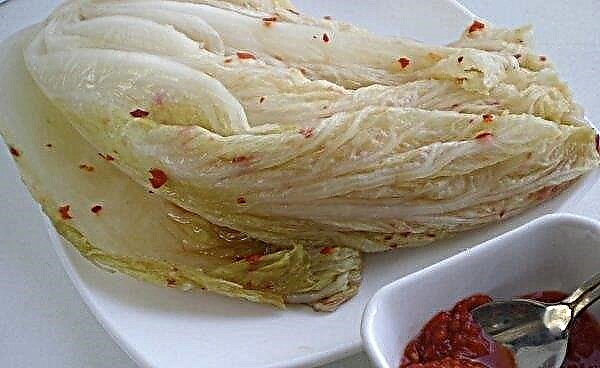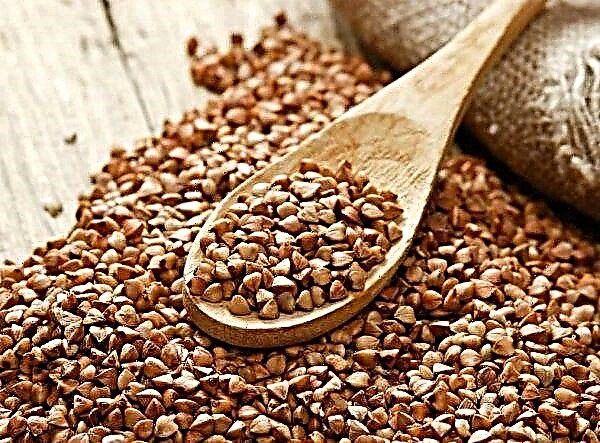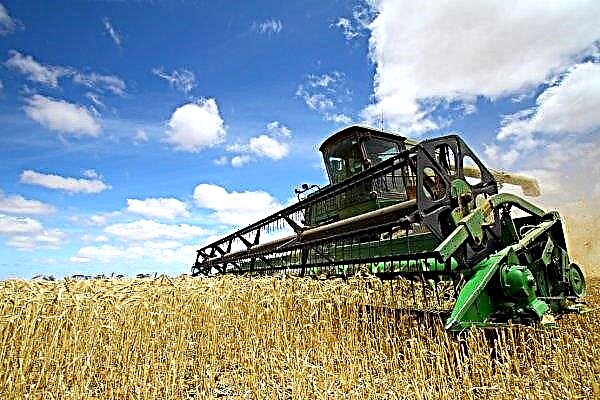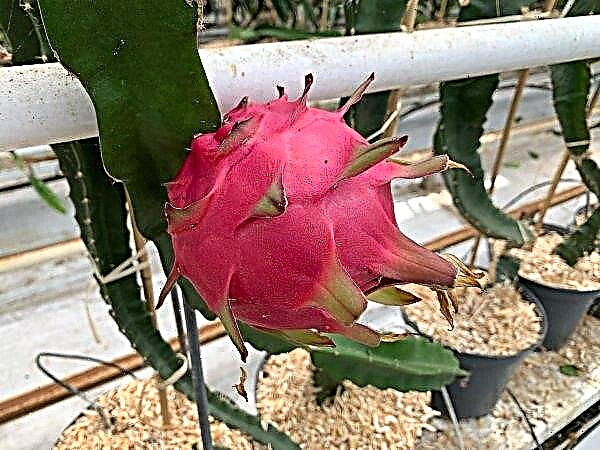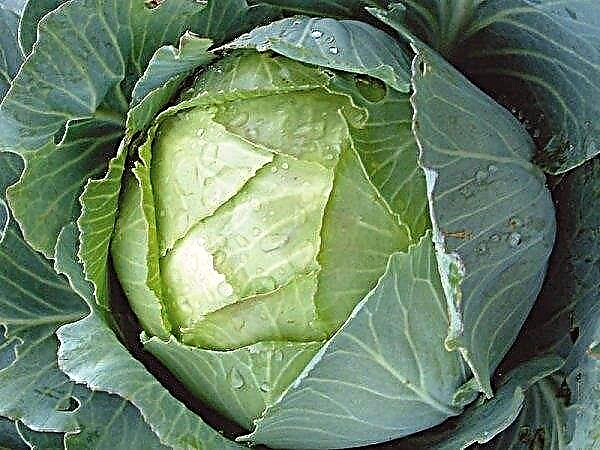If a polycarbonate greenhouse is planned to be used year-round, then it is imperative to warm it and conduct heating in it. Simple options for how to insulate a greenhouse and how to heat it better are compiled in an article.
Features of warming polycarbonate greenhouses for the winter
It is necessary to think about the insulation of a polycarbonate greenhouse during its installation or construction. Care should be taken that the plants grown are not exposed to cold air currents penetrating from the outside, and their root system does not suffer from the cold coming from a frozen foundation or earth.
Did you know? The first large greenhouse construction, the construction of which forged steel was first used, was the Palm Greenhouse or Palm House, located in the UK. Its construction lasted from 1844 to 1848. In the greenhouse, 70% of all palm trees, today known to scientists, are collected.
Draft insulation
During the construction of the greenhouse construction, sealing is very important, namely the sealing of all cracks, holes, joints through which cold air can penetrate. The simplest and most effective option for insulation is sealant treatment. It is poured into all available cracks and holes.
A cheaper, but not so durable option is insulation with construction tape.
Slots at the joints can be sealed in two ways:
- Using a U-shaped polymer profile.
- Using a viscous sealant or mastic.
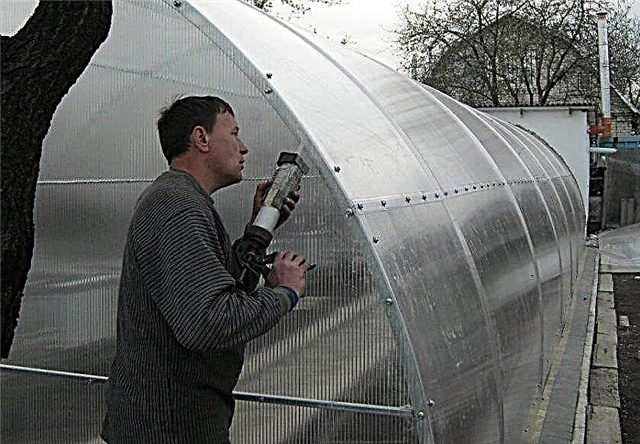
When building a greenhouse, you need to make sure that there is a vestibule in it that will not allow cold air to enter the room when opening the doors. In such a vestibule in the future, you can install a stove for heating.
If there is a possibility and means, then it is possible to mount the walls of the greenhouse in 2 layers, leaving an air gap between them. This method will significantly reduce heat loss.
Reliable isolation from drafts by the above methods will allow the use of a greenhouse in areas with warm and mild winters, where the air temperature does not drop below + 5 ° С. In colder conditions, in addition to them, it is necessary to apply additional methods of insulation.
Important! When fixing parts during the installation of the greenhouse, in order to avoid large holes, you should choose self-tapping screws that will completely overlap the holes for them.
Foundation insulation and blind areas
A properly executed foundation in itself is already able to make the greenhouse warmer, preventing the plants from contacting with frozen ground. However, when using a greenhouse in frosts, it also needs to be insulated with improvised or special means and materials.
Most often, polycarbonate greenhouses are installed on a tape base. In this case, before laying it, you need to determine the level of freezing of the soil. It is at this depth that the foundation must be established. Thermal insulation material, for example, glass wool, foam glass, mineral wool, will need to be laid on top of the foundation.
The most modern material, which has collected many positive reviews, is extruded polystyrene foam. It is laid after the concrete pour hardens. Top with a layer of sand and lay fertile soil. The same material is also good for insulating side surfaces.
How it looks can be found by looking at the diagram:

With a block foundation, you need to cover the blocks with roofing material, and insulate the inner space with foam or a 40-cm layer of sand.
Ground insulation
There are several ways to insulate the soil. The simplest is biological, when self-heating organic substances are added to the soil, for example, manure with sawdust (300 g / 1 m²), humus. To burn biological substances, the soil must be moist, with a neutral or slightly acidic pH, and contain nitrogenous compounds.
Soil warming can also be done by installing high beds. Compost is poured into the bottom layer, and the beds are made 40 cm high.
Also, the soil will become warm if you add sawdust to it. The soil should be removed by 30 cm, covered with a 5–10 cm layer of sawdust treated with fungicides, watered with slaked lime, and a 30 cm layer of fertile soil laid.
Another way is to lay a heating cable under the soil layer. It is laid at a depth of 10 cm.Important! The introduction of organic matter into the soil must be done competently, with the endurance of the necessary time frame between the preparation of the soil and planting. It should be remembered that organic substances can heat up to + 60 ... + 70 ° C, which means that they can burn the root system.
You can apply the most well-known method of warming beds, which is most often used in open ground, but it is also suitable for the protected - shelter with agrofibre or film.
Types of heating systems for a polycarbonate greenhouse
If in the region where you live harsh winters, then you need to think about how to warm the greenhouse. Today, there are several types of heating, each of which has both advantages and disadvantages.
Sunny
This is the most modern and environmentally friendly heating system, but, unfortunately, one of the most expensive. To convert solar energy into heat inside the greenhouse structure, its surface is sheathed with light-attracting materials, solar panels, collectors are installed. For even heat distribution, installation of fans is required. The downside of such equipment is that heat will not flow on cloudy days. Therefore, it can only be considered as an additional heating method. Also, with this method, it is impossible to regulate the temperature regime.
Electric
Electric heating involves the installation of various types of heaters, powered by electricity, for example, with infrared radiation, electric batteries, heaters, boilers. This method has more disadvantages than advantages. Firstly, a lot of expensive energy is spent on such heating. Secondly, with it it is impossible to evenly heat the room - in the place where the heater is installed, it will always be warmer than in a remote area.

You can solve the problem by installing a fan, but this device will drive a draft harmful to plants and cool the air. Thirdly, heating appliances greatly dry the air, which also negatively affects the growth and development of crops. If you do not take into account the high cost of electricity, the most successful is infrared heating - the installation of lamps, heaters, films.
- Its main advantages are:
- when it does not dry air, only plants and soil are heated;
- he is safe;
- can raise the temperature in a short time - in just 10 minutes.
Furnace heating
Another way to heat a greenhouse is stove heating. In the greenhouse, you can install different types of stoves in which various heating materials are used: firewood, briquettes, coal.
Here is a list of several types of stoves that are suitable to heat a greenhouse in frost without electricity:
- Potbelly stove. Made of metal. Equipped with a chimney, which should be taken outside the greenhouse. When installing such a furnace, care should be taken to complete it with a water circuit and install a fan for even heat distribution.
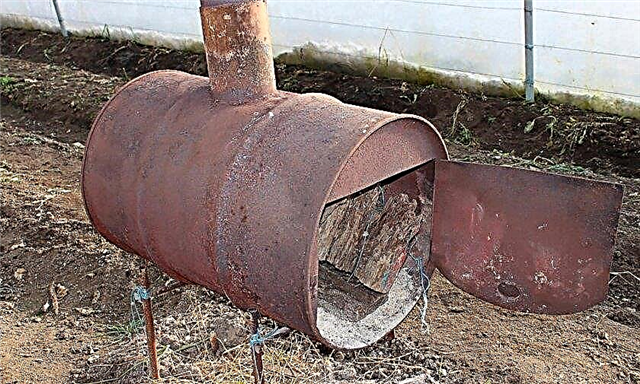
- Buleryan furnace. This type requires laying firewood. Advantages of the method: low cost of heating material, quick heating of the building, maintaining the temperature at a given level, the ability to do it yourself, ease of installation. The furnace is equipped with hollow pipes, thanks to which it is possible to achieve uniform heating of the building.
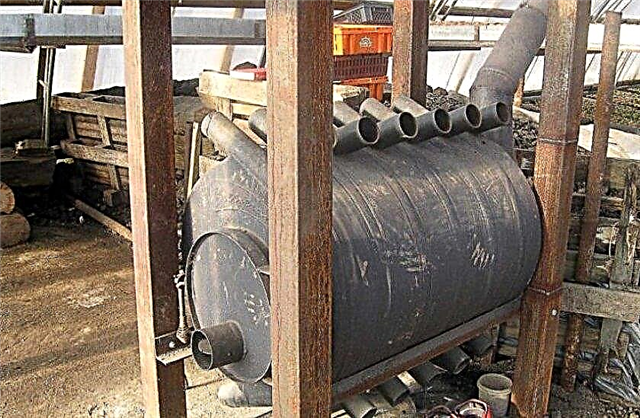
- Brick oven. With the help of such a stove you can evenly and gradually heat the greenhouse. It is installed on a solid base, at a distance of 1.5 m from the polycarbonate walls.
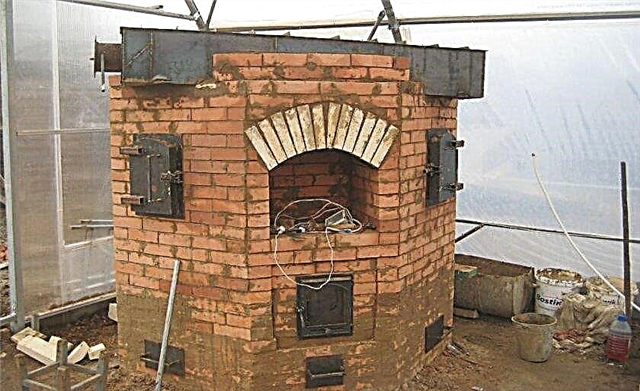
The advantages of the furnace heating method are its ease of installation, good efficiency, the ability to regulate temperature conditions, and availability. Among the disadvantages is the need to control the operation of the furnace so that there is no fire or smoke.
Important! When installing stove heating, you should definitely consider the humidification system.
Aerial
This method involves the installation of devices that exude warm air - fan heaters, guns, etc. Its advantages are the speed of heating. Among the shortcomings: air overdrying, because of which it is necessary to constantly control the level of humidity, and the high cost of electricity.

Water heating
A good, but expensive installation option for heating is water. It allows you to simultaneously heat both the air in the building and the soil.
To install it, you will need to lay pipes made of copper, plastic, steel inside the greenhouse (along the walls, under the ground, between the beds), through which hot water will be circulated, heated in the boiler. The boiler is heated using electricity, solid fuel or gas. Continuous water circulation is carried out by the pump.
The disadvantages of such a system include the complexity of installation, the high cost and the need for constant monitoring of its operation.
DIY greenhouse heating system
The heating system can be made independently, for example, by constructing a mini-stove from a barrel or by converting a gas cylinder into a boiler.
Furnace heating
The furnace can be made of a metal barrel with a capacity of 3 m³. Its interior must be painted with two coats of paint to prevent rust.
The following materials and tools will need to be prepared:
- screwdriver;
- welding machine;
- metal cutting tool;
- a barrel;
- paint;
- a brush;
- a pipe 5 m long;
- iron sheets;
- profile pipes 40 × 20 × 1.5 mm in size.
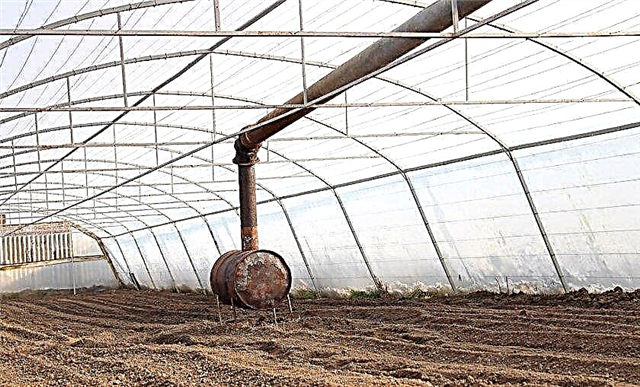
- Make holes for pipes, chimney, drain valve, expansion tank in it.
- From metal sheets you need to weld the oven and insert it into the barrel.
- A 5 m long pipe is welded to the chimney hole, which is led out.
- From above, an expansion tank with a volume of 20 liters is installed. It can be welded from sheet metal.
- Next, pipes are welded to the furnace, which are laid out on the ground at a distance of 1.2 m from each other.
- Install a pump for water circulation.
- The stove can be heated with wood or other solid fuels.
Gas cylinder greenhouse boiler
If at hand there is an empty gas cylinder, then it can be used for equipment heating the greenhouse. It must be well washed and dried for several weeks. Then paint should be fired.
For the manufacture of the boiler will require the procurement of the following materials and tools:
- metal grates;
- door handles;
- gate valves;
- loops;
- grinders;
- pump.
The manufacturing technology of the boiler is as follows:
- Cut the balloon into halves. One part will go under the case, the second - under the ash box.
- Weld the grill inside the cylinder so that it is divided into 2 chambers.
- Cut the front wall.
- Cut the door out of the rest.
- Weld a handle to the door.
- From the other half of the balloon cut a semicircle, from which subsequently make the bottom of the drawer.
- At a certain distance from the hole under the box, make a rectangular opening.
- From the cut-out part, make the door by welding the hinges and the handle to it.
- Make 2 holes on top of the case.
- Attach a coil using welding and output the ends of the pipes.
- Make holes in the back of the case.
- Attach a pipe for connecting the chimney.
- Weld the chimney, which should go through the greenhouse and go outside in the back of it.
- Attach pipes to the ends of the coil.
- Connect the pump.
- Weld the legs of the fittings.
- Prepare a brick or concrete base for the boiler.
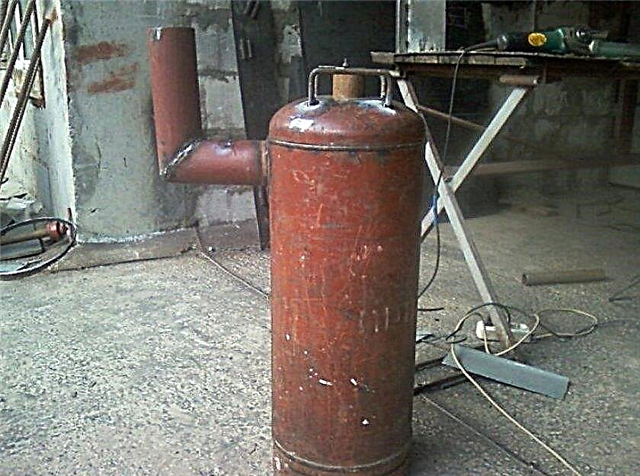
Useful Tips
In order to successfully grow plants in an insulated and heated greenhouse, we suggest using the following recommendations:
- Before choosing a heating method, you should analyze the climatic conditions and take into account the intensity of operation of the greenhouse.
- Even when installing the most efficient heating and insulation system, do not forget to clear the building of snow. Cleared snow can be used to moisten the soil.
- Solar heating is best installed in an arched or hemispheric greenhouse.
- The greatest efficiency is for systems that are located below, for example, the "warm floor" system, heat-conducting pipes on the ground.
- If you install infrared heating, then using it you can make various climatic zones to cultivate plants that put forward different requirements for the temperature regime.
- When using stove heating on wood, do not forget that wood ash is an excellent fertilizer.
- In regions with particularly severe winters, combined heating should be installed using different types of heating.
- When using electric heating, you can save on the use of electricity if you install a temperature controller and an automatic on and off system.
Did you know? For the first time, the inhabitants of Ancient Rome began to grow plants in the prototypes of greenhouses. Greenhouse buildings, similar to modern ones, were used to grow exotic crops in medieval Italy and Germany.
So, when using a polycarbonate greenhouse in winter, it must be insulated and heated. Today there are several types of heating. When choosing a suitable heating system, you should focus on the area of the greenhouse structure, the climate in the region and your financial capabilities. The greatest efficiency can be achieved by installing a combined system.







